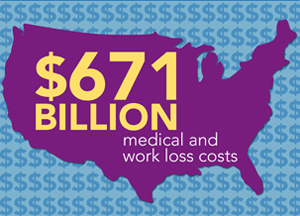During the early 1960s, concern that smallpox could be imported into the United States, and a broader interest in solving health challenges facing humanity, catalyzed the U.S. government's commitment for global smallpox eradication, which culminated on November 23, 1965, with a White House press release announcing plans for smallpox and measles vaccination campaigns for West Africa. Shortly afterward, in January 1966, the CDC Smallpox Eradication Program was established in the Office of the CDC Director, demonstrating strong agency-wide commitment to smallpox eradication and enabling deployment of resources across the agency. Ultimately, approximately 300 CDC staff members participated in the eradication initiative, and smallpox was declared eradicated by the World Health Organization in 1980.
January 2016 marks the 50th anniversary of the establishment of CDC's Smallpox Eradication Program and the beginning of CDC's leadership in global immunization. This year CDC will begin implementing a new Strategic Framework for Global Immunization, 2016–2020, that articulates CDC's vision of a world with healthy persons protected from vaccine preventable disease (VPD), disability, and death.
A major focus during the next 5 years will be to provide scientific leadership and evidence-based guidance to achieve a world free of polio. CDC will also build on and leverage achievement of polio eradication to increase focus on preventing VPD importation into the United States; preventing, detecting, and responding to VPD outbreaks globally as part of the Global Health Security Agenda (https://ghsagenda.org); achieving a world free of measles and rubella; ending VPD deaths among children aged <5 years; and reducing chronic disease and cancer deaths from VPDs.








